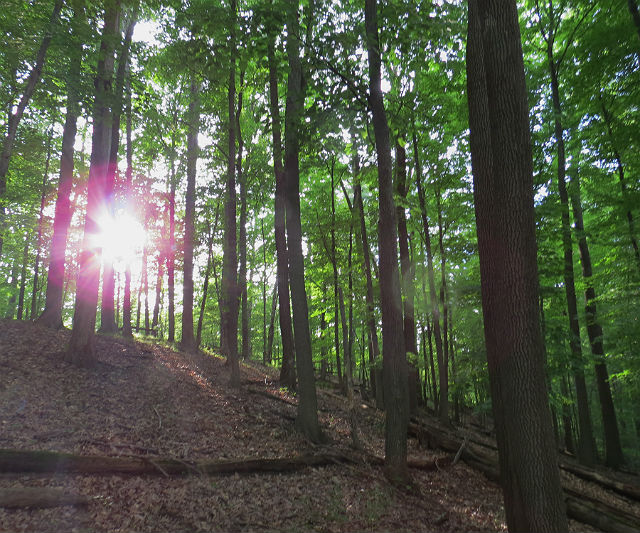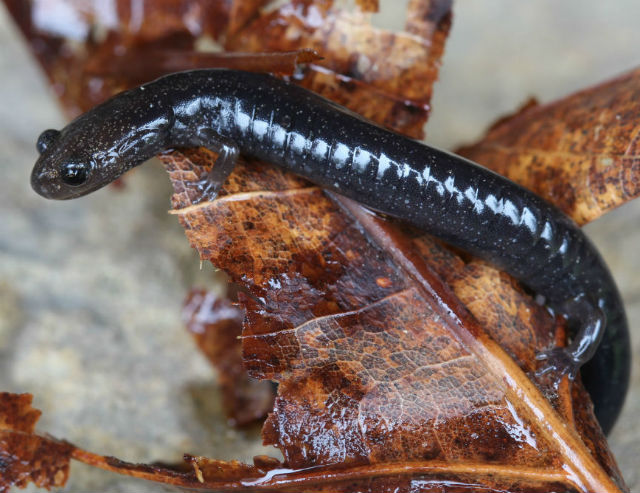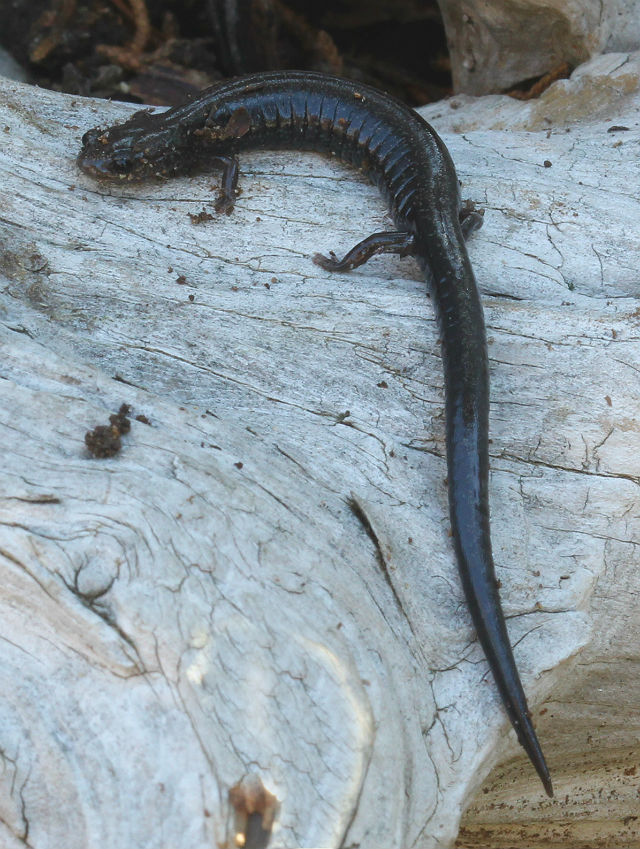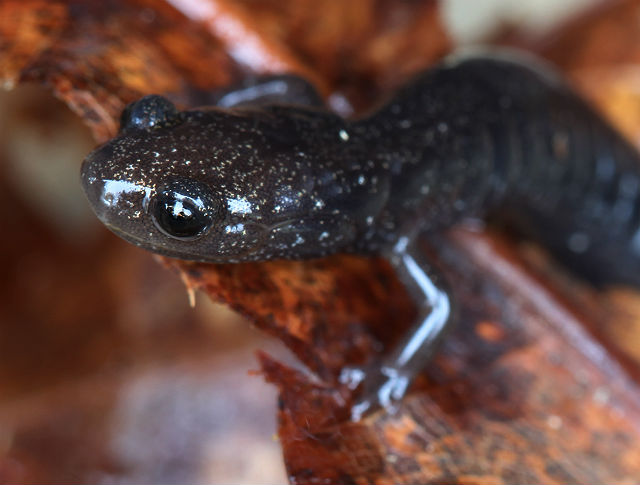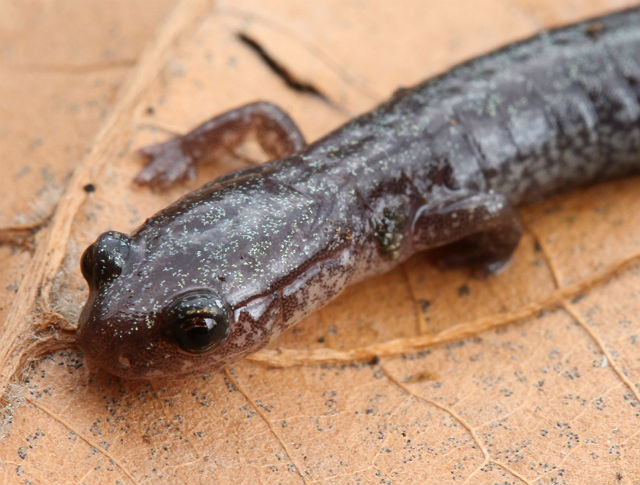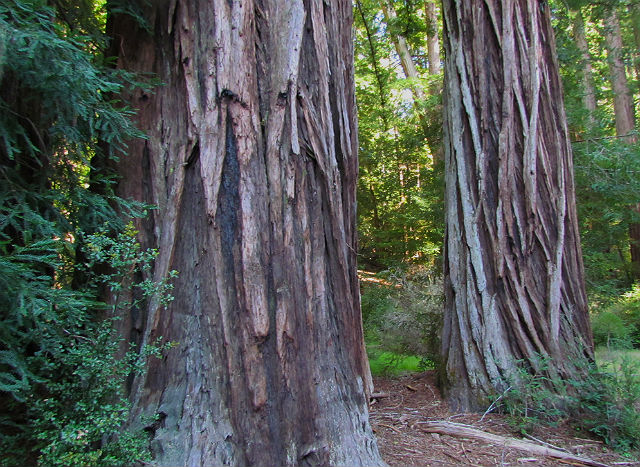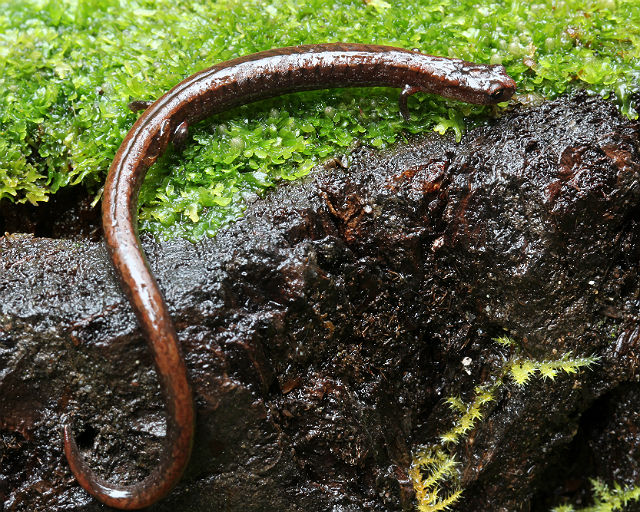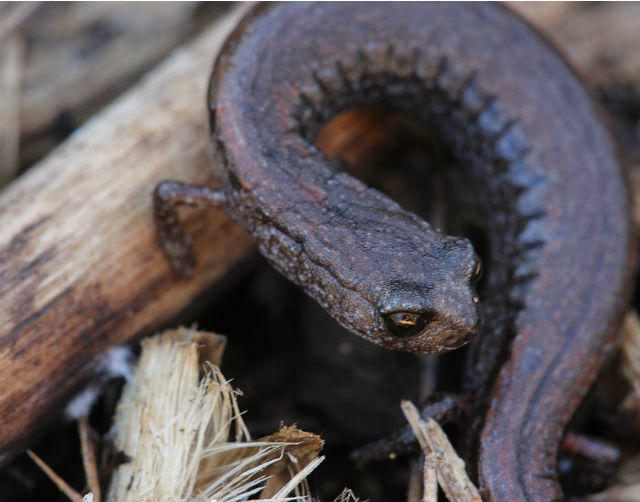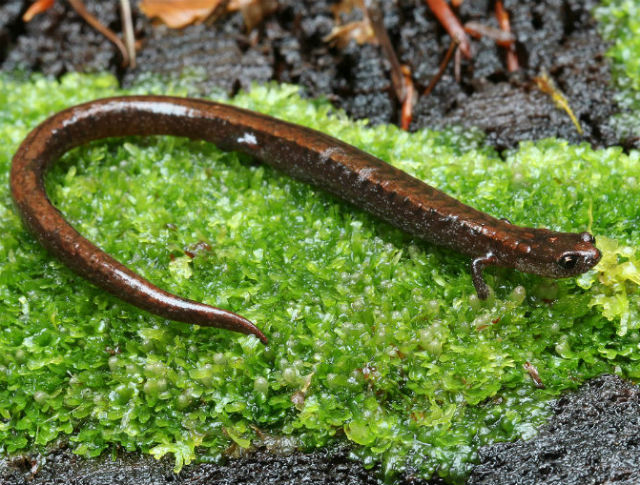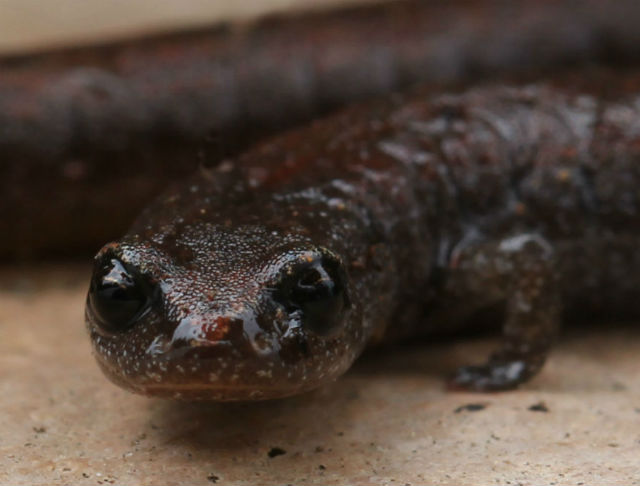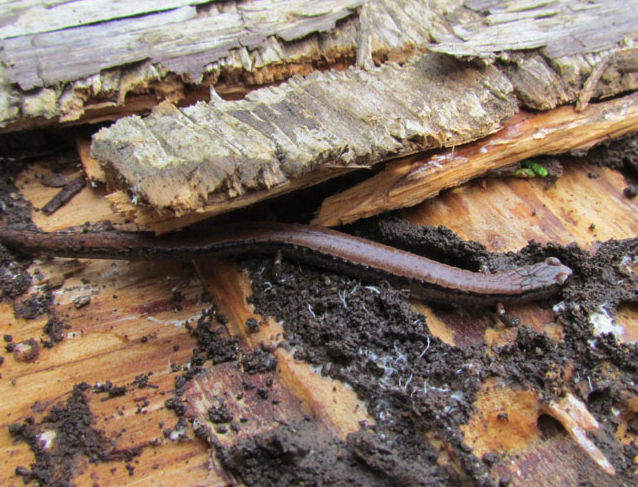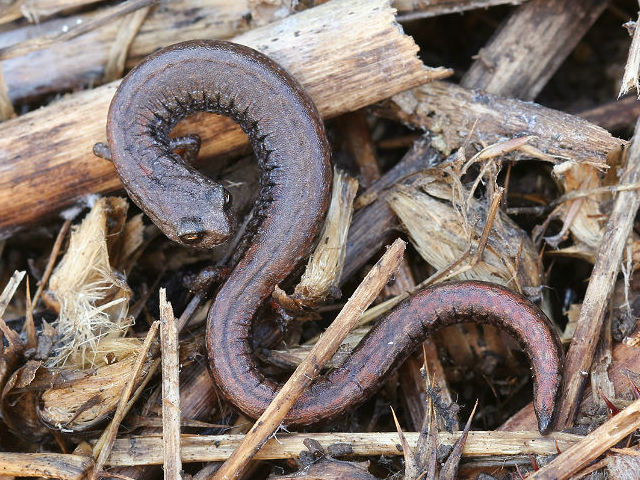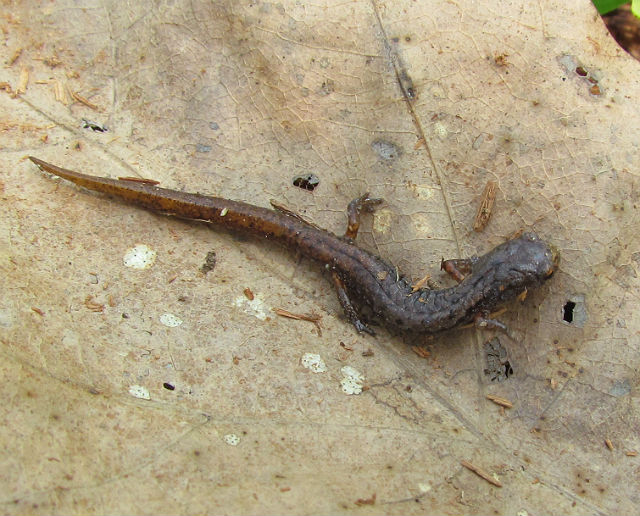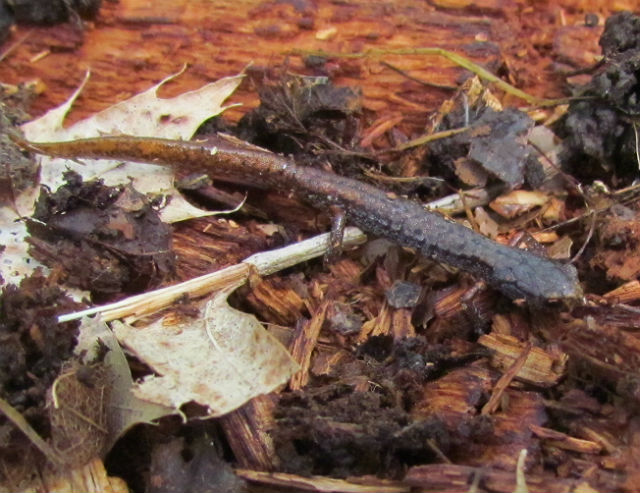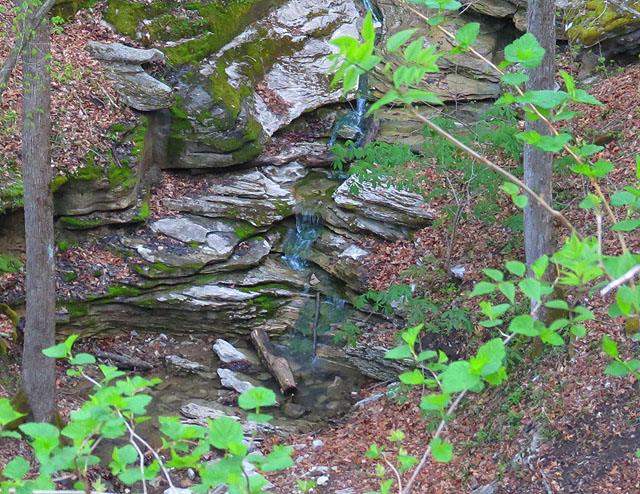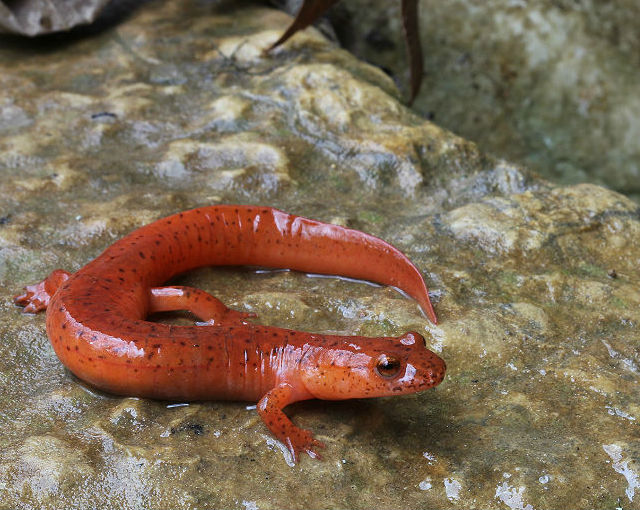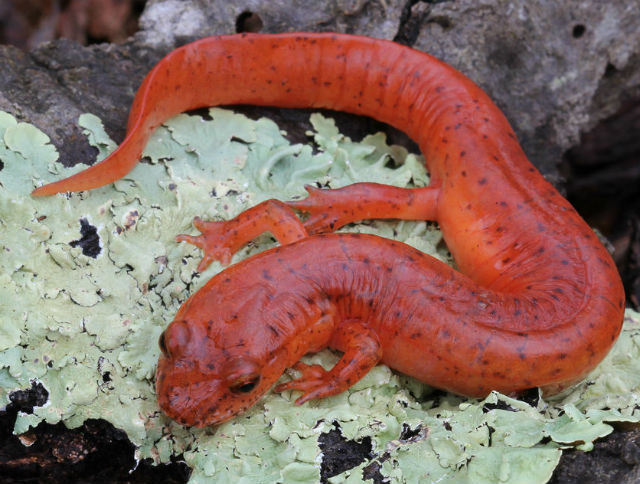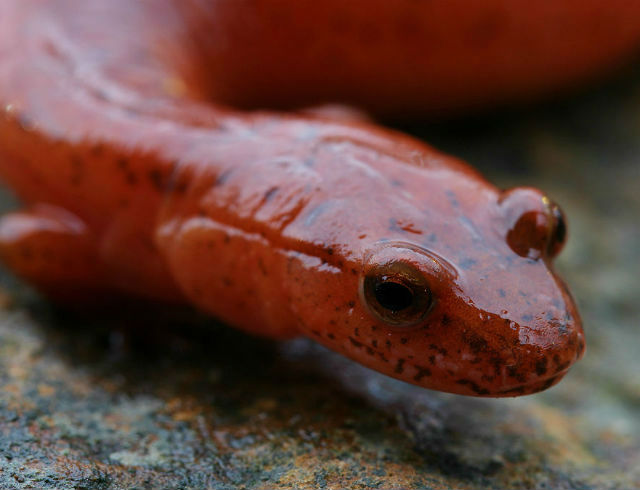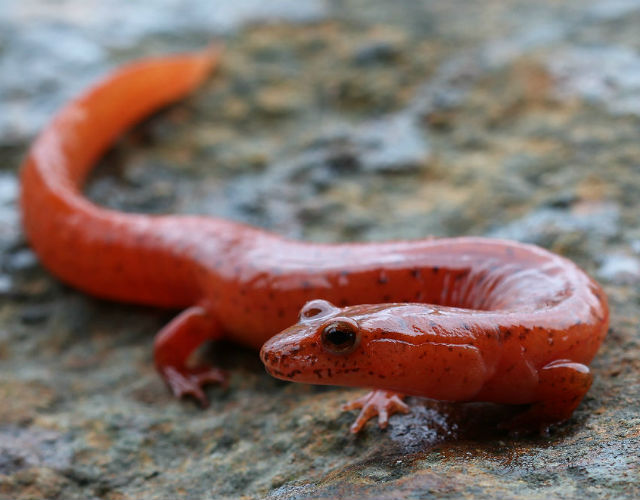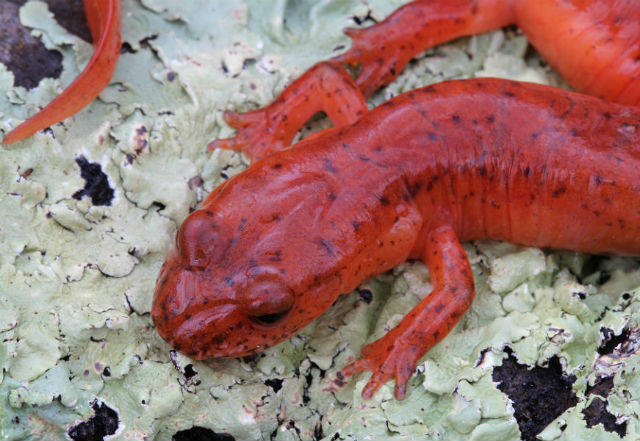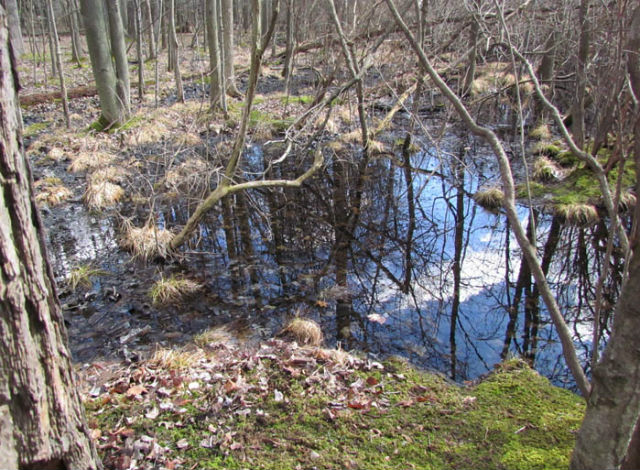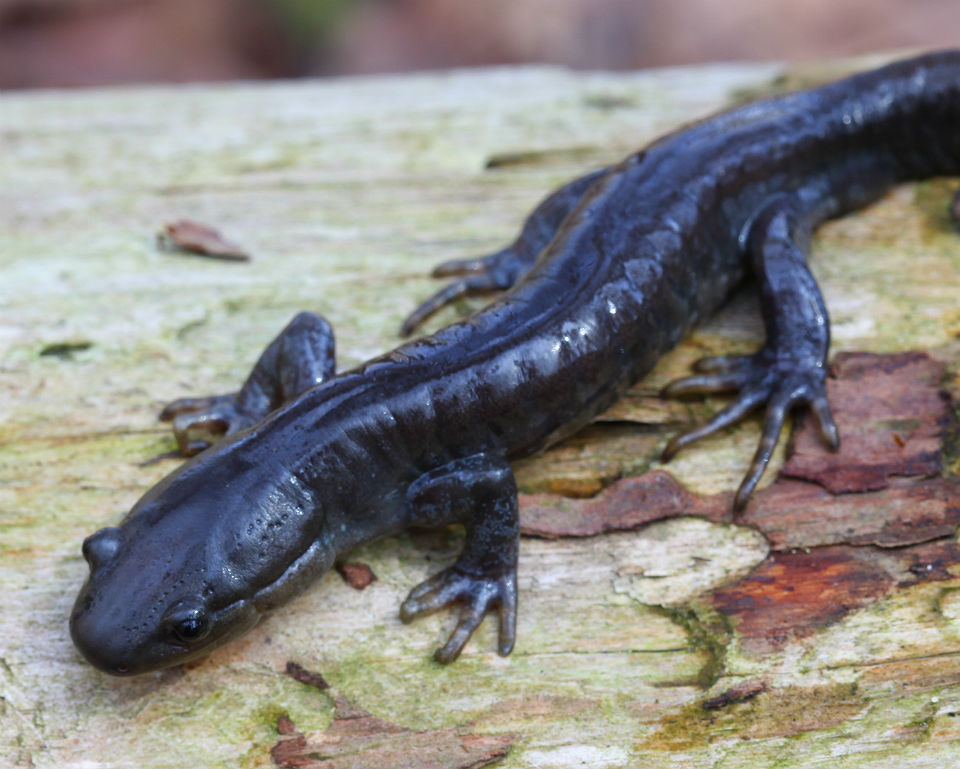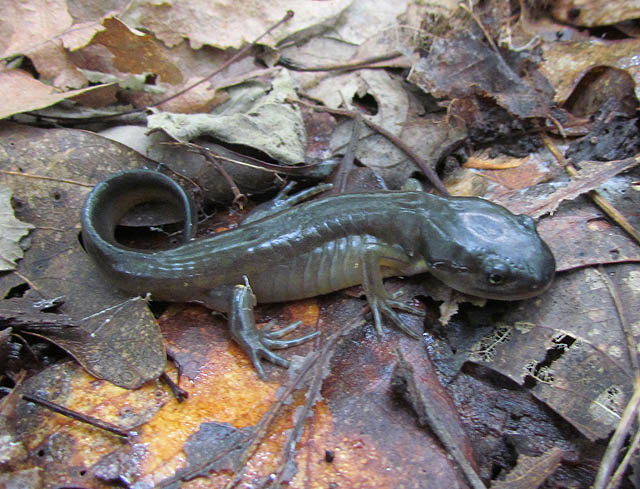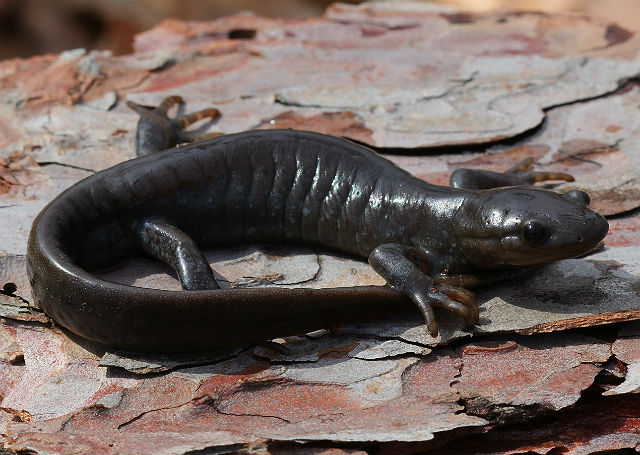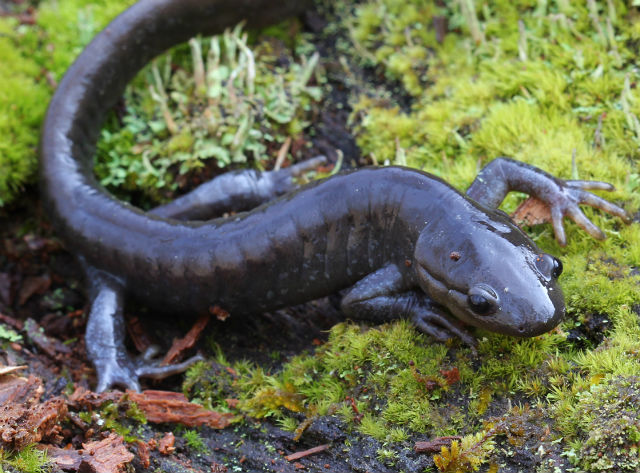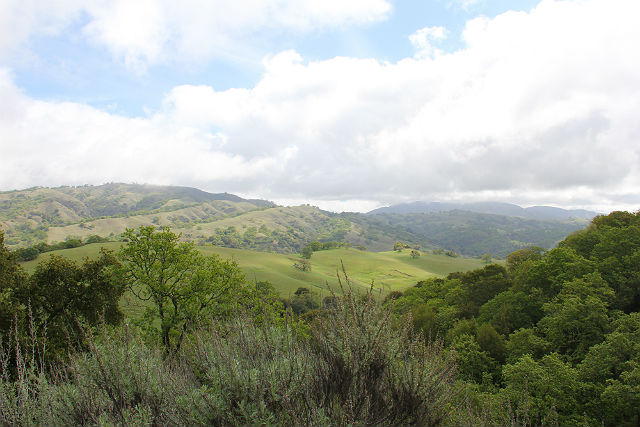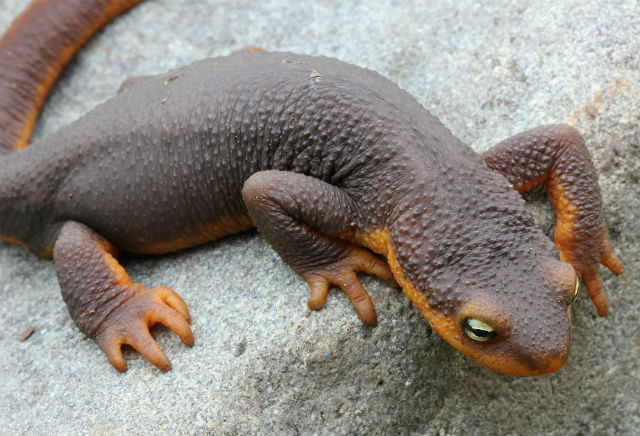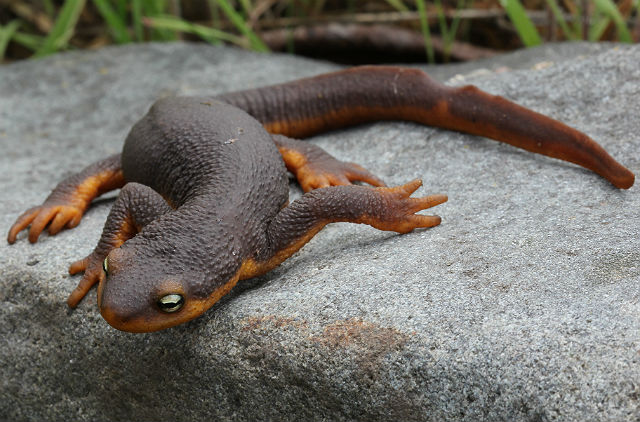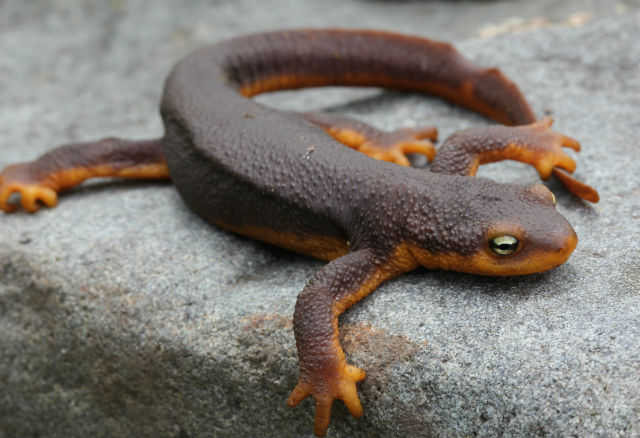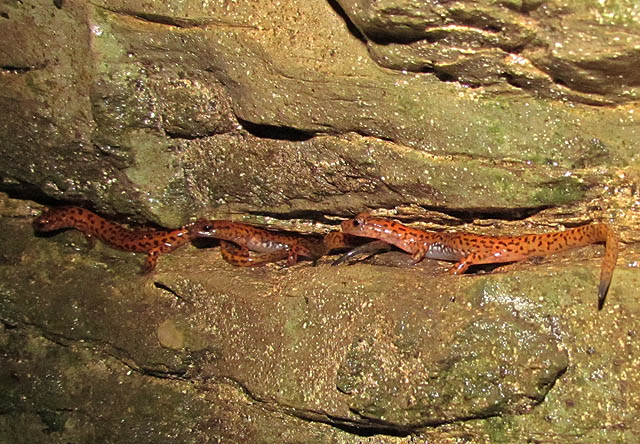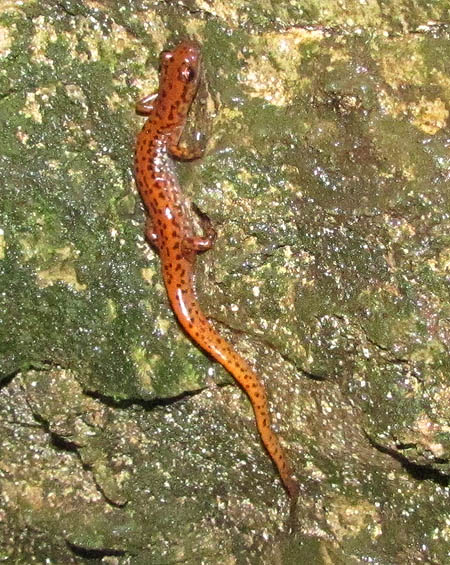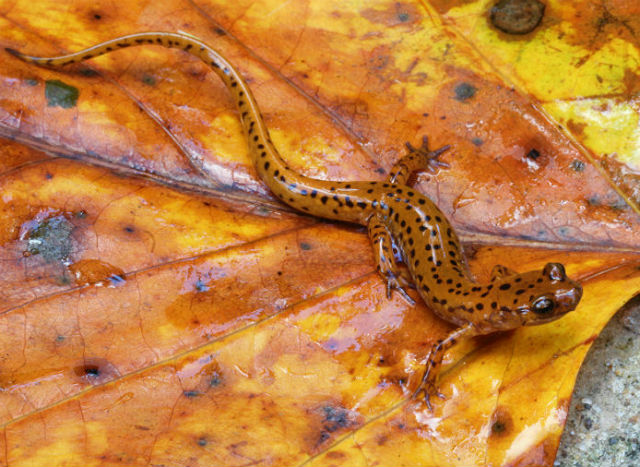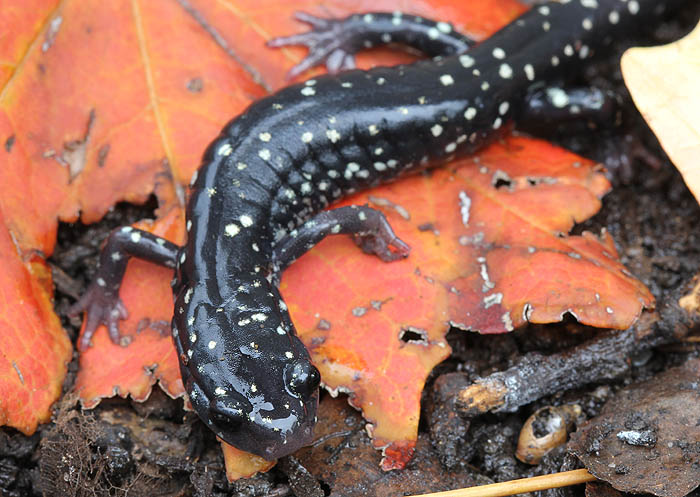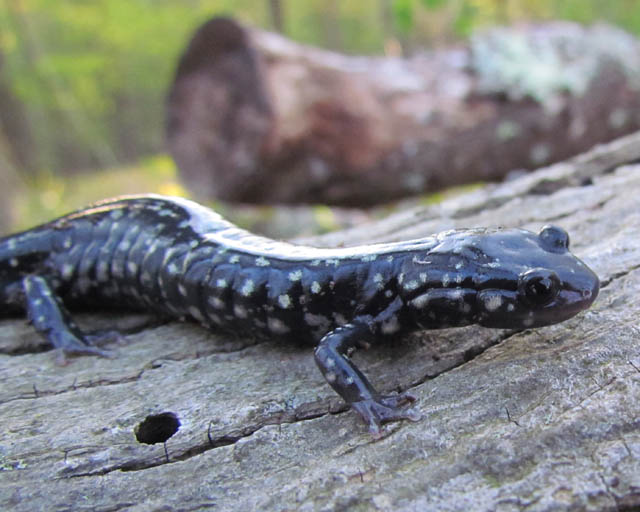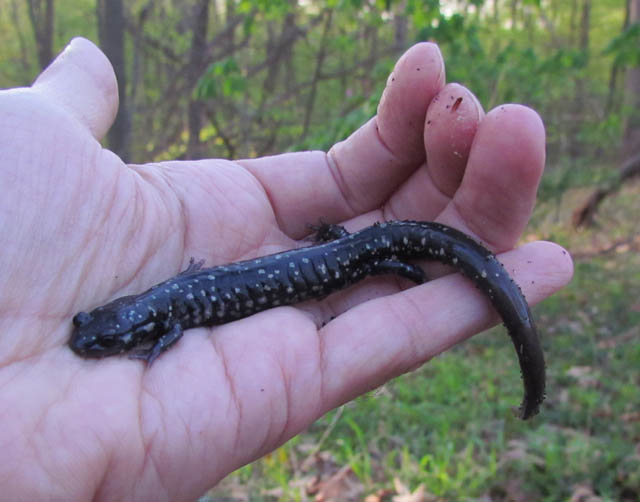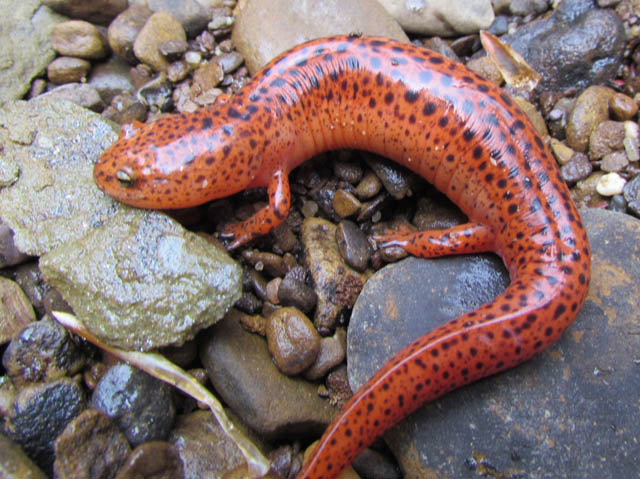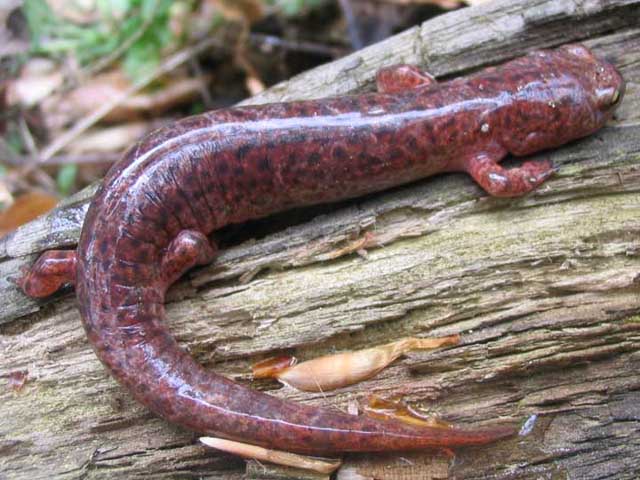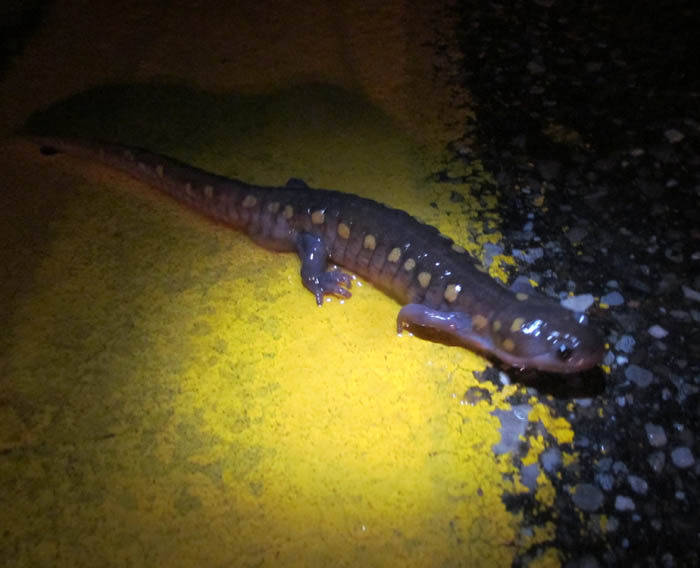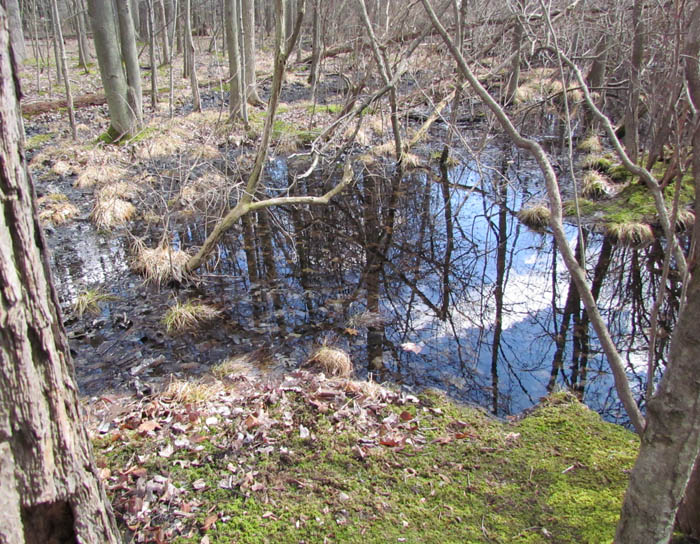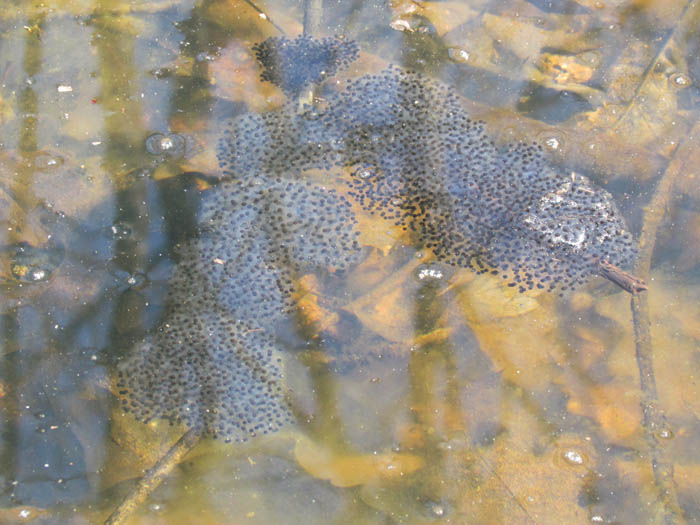This amphibian can easily be mistaken for the “leadback” phase of a Redback Salamander. It has short limbs and is somewhat worm-like in appearance and movement.
The background color is brownish black to black and flecked with a varying amount of fine silvery white to golden specks. This is Ohio’s most slender salamander. One-half of this animal’s total length is made up of its tail.
Ravine Salamanders reside in forests and are often found on the slopes of valleys and ravines where it lives among the leaf litter, hiding under logs, stones or stumps. Unlike many amphibians, this creature completely terrestrial, laying eggs on land. The eggs hatch as tiny juveniles.
During Spring and Fall they can be found on the surface under leaf litter and other debris, but they burrow into the ground or retreat into deep, moist crevices to avoid the warmer temperatures of Summer.
Adult Ravine Salamanders are 3–4½ inches in total length. They are found in eastern Kentucky, Ohio, southern West Virginia, western Virginia, northwestern North Carolina and northeastern Tennessee.
This is a species of amphibian is in the “lungless salamander” family, which contains many species. Like other members of its genus, Ravine Salamanders lack lungs and conduct respiration through their skin and lining of their mouths. For this reason they need damp conditions in order to function.

